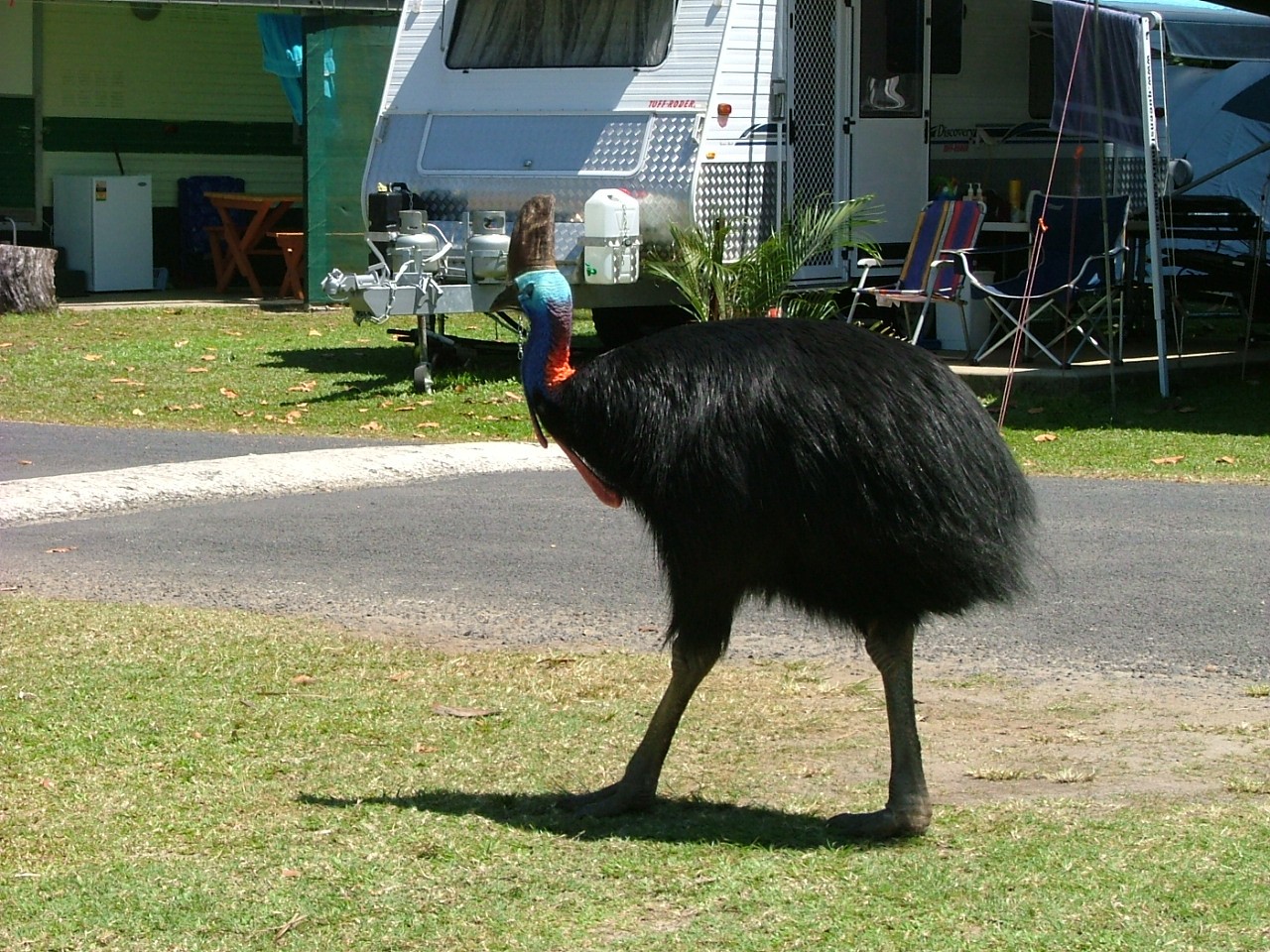Southern Cassowary
A species of Cassowary, Also known as Two-wattled Cassowary Scientific name : Casuarius casuarius Genus : Cassowary
Southern Cassowary, A species of Cassowary
Also known as:
Two-wattled Cassowary
Botanical name: Casuarius casuarius
Genus: Cassowary
Content
Description People often ask General Info
 Photo By Licualawinq1 , used under CC-BY-SA-3.0 /Cropped and compressed from original
Photo By Licualawinq1 , used under CC-BY-SA-3.0 /Cropped and compressed from original Description
The heaviest flightless bird in Australia, the southern Cassowary lives a solitary life in dense tropical rainforests. With its long, dagger-like claws, this aggressive, territorial, and "bad-tempered" bird can inflict serious injuries to the enemy. It plays an important ecological role in rainforests, as it's able to disperse large seeds that no other animal can swallow.
Size
1.7 m
Life Expectancy
20-40 years
Nest Placement
Ground
Feeding Habits
Southern Cassowary primarily consume fallen fruit, as well as a variety of fungi. Occasionally, southern Cassowary may eat small vertebrates and invertebrates. They forage on the forest floor, using their large feet to clear debris. Notably, southern Cassowary have a role in seed dispersal due to their frugivorous diet.
Habitat
The southern Cassowary typically resides in dense, mature rainforests rich in a diversity of fruiting plants from families like Lauraceae, Myrtaceae, Elaeocarpaceae, and Arecaceae. This species prefers intact forest habitats, venturing occasionally to eucalypt woodlands and palm scrubs. Geographically, southern Cassowary is found in the broader regions of the lowland to mid-elevation rainforests, extending to gallery forests, swamp forests, and the edges of savanna woodlands. They are also known to frequent riverbanks and coastal areas, often foraging along beaches within their range.
Dite type
Omnivorous
People often ask
General Info
Feeding Habits
Bird food type
Species Status
Although subject to ongoing habitat loss, limited range, and overhunting in some areas, the southern cassowary as of 2017 evaluated as Least concern on the IUCN Red List of Threatened Species. The Australian population is listed as Endangered under Federal and Queensland State legislation. Some threats are habitat loss (logging), feral animals eating their eggs, hunting, and roadkill. 
Scientific Classification
Phylum
Chordates Class
Birds Order
Emu and Cassowaries Family
Cassowaries and emu Genus
Cassowary Species
Southern Cassowary